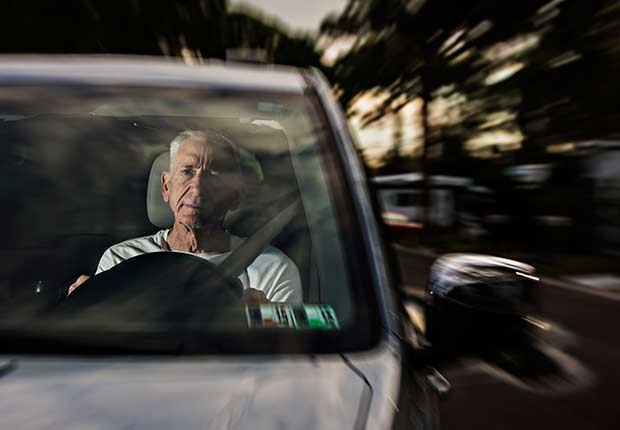AARP Hearing Center

By Hilary Appelman
John Sparvero’s first car was a 1949 Ford coupe with a stick shift and no air conditioning or seatbelts, nicknamed “Patches” because of the repairs he’d made to the back seat.
Today, Sparvero’s minivan has a sensor that turns his high-beam headlights on and off automatically and a backup camera that alerts him when a car or person is within 100 feet.
“My first car, the only radio I had was AM,” said Sparvero, 78, a retired high school science teacher who leads AARP Driver Safety courses in the Pittsburgh area. “Now we all have computers in our cars.”
The AARP Smart Driver course is aimed at helping drivers 50 and older stay up to date on changing technologies in and outside the car, as well as aging and health issues. A revamped curriculum, developed in collaboration with national experts on aging and driver safety, debuted in 2014.
Stan Rothman, of Lords Valley in the Poconos, has taught driver safety classes for more than 18 years. He said the latest version “takes in more technology, more medical issues that affect senior citizens.” He likes a section on how the brain changes as we age.
“Our reflexes are slower, our eyes aren’t as good, our peripheral vision is closing down and we don’t make decisions as quickly,” said Rothman, 82. “That hasn’t changed, but we have more updated material proving how accurate these statements are.”
Smart Driver classes are offered year-round across the state, taught by about 225 volunteers. About 25,000 Pennsylvanians enroll each year, including about 5,000 who take the class online.
Drivers can find a local class by going online to aarp.org/drive or calling 877-846-3299 toll-free. Courses are open to drivers of all ages, and AARP membership is not required.
Pennsylvania requires insurance companies to offer a 5 percent discount for three years to drivers 55 and older who complete the course.
Instructors spend time on trouble spots such as intersections and left-hand turns, and offer practical advice, such as how to adjust side mirrors to minimize blind spots.
Impact of new laws
Instructors also review state laws that drivers may not be familiar with, such as Pennsylvania’s “Steer Clear” law, requiring drivers to move over a lane when passing stopped police or emergency vehicles.
Another law, adopted in 2012, requires drivers to leave a 4-foot buffer when passing bicycles—even if that means crossing the center double yellow line.
Jeff Ostroff, 63, a retired marketing and communications professional who took a refresher class at Chester County’s Kennett Area Senior Center, said he hadn’t been aware of some of the newer laws reviewed in the course.
Immediately after completing the class, Ostroff checked with his insurance carrier and learned he would save $44 a year on car insurance. “You can’t beat that deal,” he said.
For people who learned to drive decades ago, a lot has changed—laws, highways and the cars themselves.
But “the biggest change is you,” Sparvero said. “Even though you might think you’re as good as you used to be, you’re not.”
Assessments ask course participants to evaluate their own driving with questions such as, “Do you sometimes ask yourself, ‘Where did that car come from?’ ” and “When making a right turn at an intersection, do you sometimes strike the curb or run over it?” A section called “What About the Future?” suggests becoming familiar with alternatives to driving before it becomes a necessity.
“We make them aware of what is coming down the pike,” says Sparvero. “They appreciate that.”
The course costs $15 for AARP members and $20 for nonmembers and is usually offered in two four-hour segments. Online classes cost $17.95 for members and $21.95 for nonmembers.
If you are interested in becoming a volunteer instructor, contact state coordinator Roland Vonderheide at 570-619-4006 or at rolandvonderheide@verizon.net.
Hilary Appelman is a writer living in State College, PA.































































